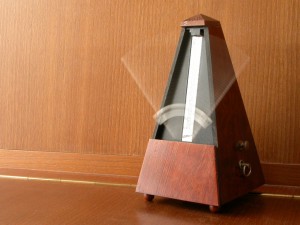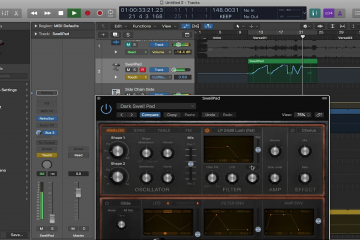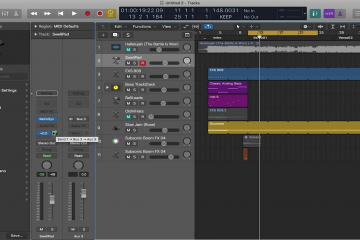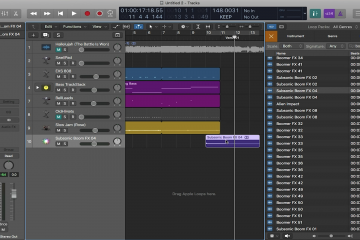Transitioning Your Band To A Click

Let’s face it. We all have tempo problems. Either we drink too much coffee in the morning or our heart beats are just a bit irregular. It can be hard, or nearly impossible, to stay on a perfect tempo for long on our own. That’s why there is the metronome / click. It’s our friend. A perfect friend actually. Playing along with a metronome helps keep a band precise in tempo, without speeding up or slowing down. Once you set it, it stays the same – completely unaffected by any sort of caffeine intake. However, the hardest part about playing to a metronome is that while it is perfect, we are not.
If you’ve never played with a metronome before, it can really take some getting used to. It can especially be hard to transition your worship band to use a click, if you’ve been flying-solo every Sunday so far. I’ve heard of people who actually go to sleep with a metronome ticking at 68 BPM (beats per minute), thinking that it would naturally train their mind to think “in time”. Interesting perspective… maybe I’ll try it.
If you’ve never used a metronome with your worship band, and would like to start using one… here are a few tips.
Proper Monitoring
The worst thing you can do is set up a metronome, but no one in the band can hear it clear enough over their mixes. Do what you can to get the metronome to as many people in the band as possible. If you have to pick only one person to have it, the drummer would be it. But if the rest of the band can hear the click, it will help everyone stay on beat as a whole and won’t put so much of the pressure on the drummer to keep everyone else in time. If you have an in-ear monitor system like Avioms, this is an easy task. If you’re on wedges, set up a mini-mixer by the drummer. Run his monitor mix into Channel 1, and the metronome in Channel 2. Make sure he has a good pair of headphones. In ear buds are best (Shure E2’s, E5, etc) as they make the click easier to hear and also doesn’t bleed. Big headphone cans can bleed the click and the audience will be able to hear it during quiet moments.
Click First
When making in ear mixes, mix the click first and build everything else around it. Resist every temptation to bury the click in the mix.
Encourage Individual Rehearsal
Encourage your band to start rehearsing during the week to a metronome. If they don’t own one, there are several websites and iPod / iPhone apps that have metronomes! It’s important that they start practicing to a click so that they begin to learn how to listen for a click as they play. If your drummer is really struggling with it, offer to do a midweek rehearsal with just him and you on an acoustic guitar. This can help immensely.
Transition Slowly
You don’t have to start using a metronome on every song this Sunday. Instead, starting using a metronome in your band rehearsals. If your drummer gets of the click, no worries… it’s just rehearsal. The best part about metronomes, is that no one hears them except you. So if you get off it, just stop it and keep going. Don’t let it train-wreck you. Just keep trying. You’ll eventually get the hang of it.
Program the Metronome
Most metronomes have a feature where you can save tempo presets for each song. That way you don’t have to scroll through in the middle of the set. You just hit “next”. This will make it much easier for your drummer and make your transitions tight throughout the set. Learn how to program it, then teach your drummer to do it.
Choose the Tempos Ahead of Time
If you don’t show up prepared, with what BPM you want to do each song in – setting up the metronome last minute seems to be set to the side. “Ahh, we can just do this song without a click”. Best way to transition to a click is consistency. Use it as much as you can. If you program it and choose your tempos ahead of time, you’ll be much more likely to use it in the moment.
1/4 notes and 1/8 notes
Most metronomes have options to set how you hear the metronome… in 1/4 notes (one, two, three, four) or in 1/8 note (one and two and three and four). In slower songs especially, it can be very help to include the 1/8 notes. It will help the drummer stay more precise and is usually easier to follow.
Let the drummer run it
In most setups, its not easy for the worship leader to be starting and stopping the metronome. It’s best to let someone else in the band run it. Most often that is the drummer. This allows the drummer to really own the metronome and know exactly when it is starting and when it’s stopping. Instead of being surprised by the start of the metronome, they can jump on it as soon as they start it. This will make transitions much smoother and take the weight off the leaders’ shoulders.
Encourage your team
It can take a while to get used to playing with a Click. Be sure to encourage your team in their progress. Let them know that you only desire to see them become better musicians and strengthen their musical skills. A metronome can be a great way to bring a band together and they will probably notice a change themselves in the overall sound and feel of the band.
Using a click sounds very restricting, but it is actually very rewarding. You will notice the overall tightness of your band increase, and the constant tempo changes decrease. Who wouldn’t want that?




3 Comments
Joe · August 11, 2012 at 4:16 pm
We started using clicks and it has really improved our tranditions between song tempos. We use iTunes which is sometimes difficult to start/stop. Can u suggest a metronome that would have presets saved for an entire set?
David · October 9, 2012 at 12:55 pm
We use onSong for our presets and tabs for our entire setlist. It allows you to set the BPM on each song, and you can even transpose tabs on the fly.
Caleb · February 26, 2013 at 9:40 am
Using clicks in Ableton is great too. You can preset your clicks for your entire set through Ableton. That way, as soon as one song is over, you can go ahead and start the click for the next song. This way your whole band can go ahead and get the tempo going before the song starts.